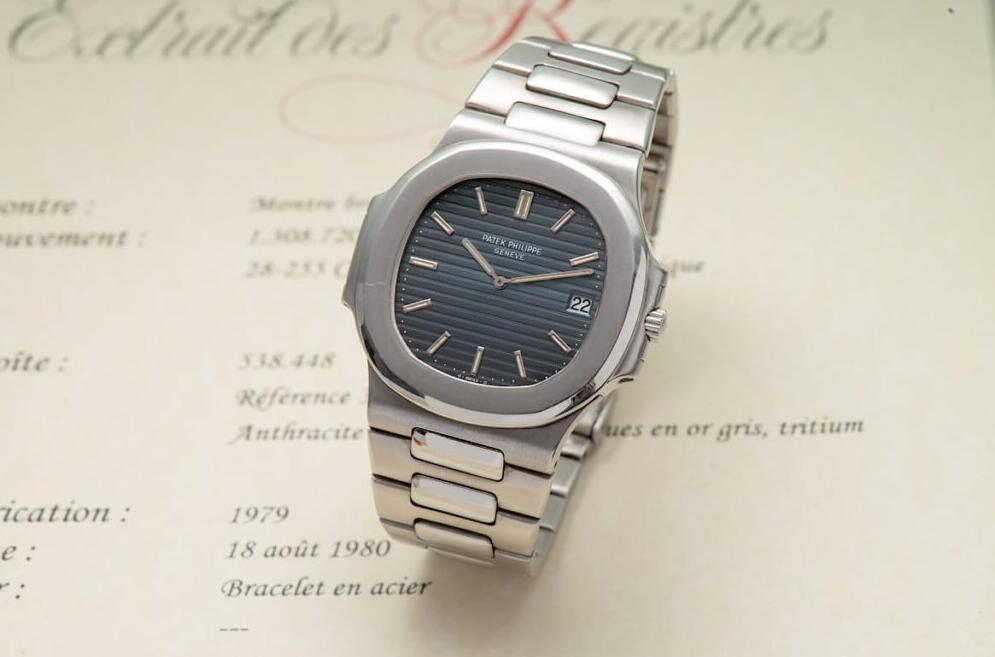The Patek Philippe Replica Nautilus is the luxury sports watch par excellence, a model available in many versions that widely exceeds the exclusive perimeter of watchmaking, rightfully falling among the icons of style, timeless objects to be passed down, as the most famous one states brand advertising, from one generation to the next. The birth of the Patek Nautilus dates back to 1976 and an extremely prolific decade in fashion, design, the rapid evolution from analogue to digital technology and, it must be added, the scene of significant political and social changes.
The Patek caliber 28-255C
The mechanical movement adopted by the first Nautilus in history is the result of a collaboration between Jaeger-LeCoultre and Patek Philippe. Coded as Patek caliber 28-255C, the original movement is automatic with 12 1/2 lignes, a frequency of 2.75 Hz and a thickness reduced to just 2.45 mm. It was also used, with the necessary customizations, by Vacheron Constantin, you will find it as caliber 1120, and by Audemars Piguet as caliber 2120, which still uses a modern variant. The Nautilus then shared the 28-255C caliber with other brands.

Equipped with a bidirectional charging system, for a total of 40 hours of autonomy on a full charge, the movement is immediately recognizable by its oscillating weight, equipped with a 21-carat gold peripheral ring. Among the peculiarities, the “switching rocker” system stands out, which manages bidirectional charging by inserting an additional wheel that engages when the rotor oscillates counterclockwise; in this case, it is the latter that is connected to the transfer one to the barrel spring which will therefore always rotate counterclockwise. The adoption of the free-spring Gyromax balance with Kif-Ultraflex shockproof system completes the synthesis of the main characteristics of a refined caliber, which aims for precision and robustness.
The two versions of Patek Philippe Nautilus 3700: the 3700/1 and the 3700/11
The Nautilus 3700 was made in two variants: the first was coded as Nautilus 3700/1 and was produced from 1976 to 1981. The second reference was the Nautilus 3700/11 and was produced from 1981 to 1990. In the image below, a example of Nautilus 3700/1 sold by the Antiquorum auction house, to which this image belongs, in 2019.

In the next image, here is an example of a Patek Nautilus Jumbo 3700/11 (and one of the first products, the extract from the archives cites the year 1981), sold by Barnebys, owner of the image below, in July 2020.

Visually, the differences between the two references are imperceptible; in reality the two models differ mainly in the width of the bracelet. On the first edition, the final width of the bracelet is 16 mm, reduced to 14 mm on the subsequent edition. On the original model you can see how the writing “Patek Philippe” and “Genève” are inserted perfectly inside the horizontal grooves. It is one of the distinguishing elements of the original model, they betray its origins and add further elegance to a watch that has evolved, albeit progressively, aesthetically and technically in a tangible way.
Patek Philippe Nautilus 3800
If we consider how much a Patek Nautilus is worth today in whatever reference you choose, it is surprising that the watch, upon its debut, did not achieve immediate success. It is destiny that often involves those who change the rules; it takes time to be appreciated and understood. Initial sales of the Patek Nautilus 3700 did not take off. So it was that Patek Philippe decided to broaden the audience by declining the original 40 mm model (excluding external protectors) into the 37.5 mm reference 3800. The new collection was launched in 1981 to coincide with the end of production of the first edition of the Jumbo.

Contrary to the Nautilus Jumbo, the new model, called Nautilus “medium size” or Midsize Nautilus 3800, adopted a different caliber from the 28-255 C, as can be guessed from the presence of the central seconds hand. The caliber 335 SC (Central Seconds) was a less refined 4Hz automatic movement than the original caliber. It was therefore less appreciated due to the absence of the Gyromax balance (a Patek patent, among other things).
In its life cycle from 1981 to 2005, the Patek Nautilus 3800 underwent several evolutions, mainly aimed at the adoption of more refined calibers, in line with the expectations generated by the original 3700 series. Subsequently, Patek Philippe equipped the caliber 335 SC of the rapid date change and in 1992 the Nautilus underwent the first, largest technical upgrade, with the introduction of the caliber 330/134 SC equipped with a Gyromax balance and awarded the Hallmark of Geneva. In 1997, the caliber 330/194 SC debuted with a frequency reduced to 3 Hz in order to increase the power reserve up to 48 hours. This movement was adopted until 2006, when the Patek Philippe Nautilus 3800 finally went out of production.

In the image above, an example of the second generation of the Nautilus 3800, equipped with the caliber 330 as can be seen from the archive extract provided by Patek Philippe.